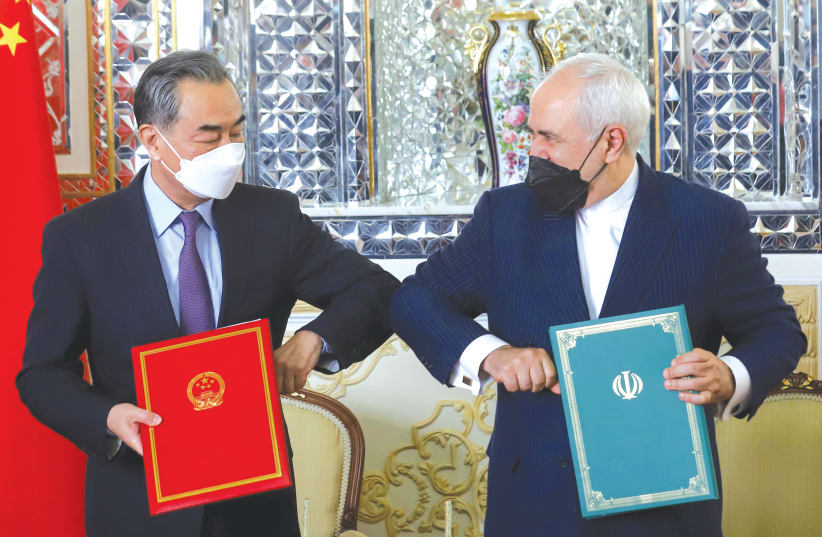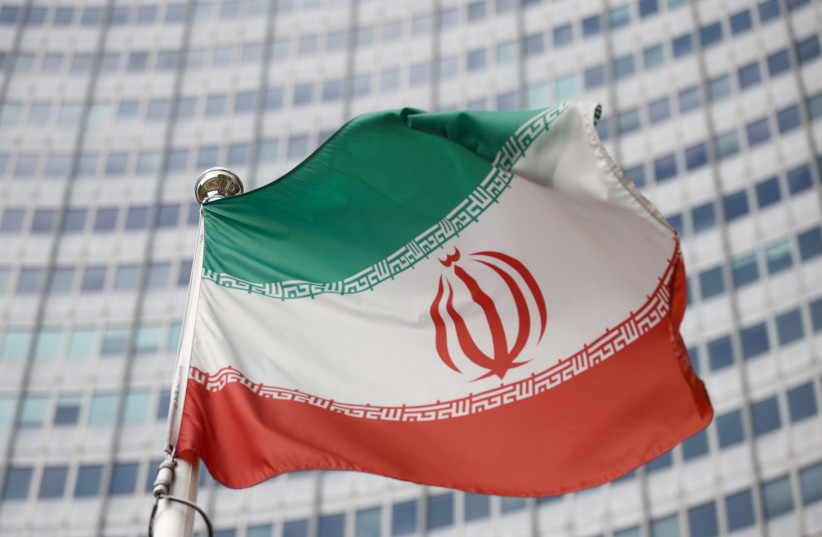On Friday, September 17, at a gathering in Dushanbe, Tadjikistan, member countries of the Shanghai Cooperation Organization voted to approve Iran’s membership in the organization.
The SCO, established by China and Russia in 2001, is an economic, political and security alliance. It currently includes eight states – China, Russia, Pakistan, India, Kazakhstan, Kyrgyzstan and Tajikistan. Together, these states account for 20% of global GDP, and include 40% of the world’s population.
Iran’s first, unsuccessful bid for full membership in the SCO took place in 2008. At that time, Tehran’s application foundered because of the objection by a number of member states to full membership for a country subject to US and UN sanctions due to its nuclear program.
Tehran applied again last year. Its efforts failed again because of opposition from Tajikistan. This week, the barriers were removed to full membership, though no date for Iran’s accession has yet been set.
How significant is Iran’s admittance to the SCO?
Iranian media, quoted in an article by Agence France-Presse, were jubilant concerning this development. Kayhan, a publication associated with hardline positions, wrote that ‘“from now on Iran can implement its policy of multilateralism, progressively abandon a vision based solely on the West and mitigate Western sanctions.”
Iranian President Ebrahim Raisi, in his address to the SCO, was similarly blunt in his appraisal of the meaning of this development.
“The world has entered a new era. Hegemony and unilateralism have failed,” Raisi told SCO leaders. “The international balance from now on leans towards multilateralism and the redistribution of powers towards independent countries. Unilateral sanctions don’t uniquely target one country. It has become evident that, in recent years, they affect more the independent countries, especially SCO members.”
On Farsi social media, meanwhile, Mohammed Hassan Dehghani, an official in Iran’s IRGC-associated “Resistance Economy” structure, tweeted that SCO “full membership” would bring “significant economic, security and political benefits” for Iran.
So are these Iranian assessments correct? Should the imminent Iranian accession to the SCO therefore be seen as a significant step in the direction of an emergent anti-Western strategic bloc, of which Iran will be a member?
THERE IS increasing talk in Western capitals of a new and emergent cold war, pitting the United States and its allies against China, and centering on the Indo-Pacific region.
The hasty US exit from Afghanistan was a perhaps clumsy attempt to draw a firm redline under the 9/11 Wars, in order to focus attention and resources on the demands of this new strategic contest, and era.
The announcement of the AUKUS pact between the US, Australia and the UK represents a sharp drawing of lines in the Asia-Pacific region, as three English-speaking countries combine in a clear effort to contain Chinese efforts at expansion in this area.
Historic strategic contests of this type between global powers do not tend to remain confined to particular geographic spaces.
The Cold War of 1950-91 consisted of a binary contest between US and USSR-led systems, which impacted on all local strategic environments.
Earlier global contests, such as the effort by European imperial powers to contain the rise of Germany in the pre-1914 era similarly came to encompass the globe (and transform it, in the conflict which these efforts eventually produced).
Are we now therefore witnessing the first moves in a similar drawing of lines in the Middle East, with the outlines of US-aligned and China-aligned blocs now visible on the horizon?
FIRSTLY, A number of caveats are in order. The SCO is not yet anything close to a China-led strategic alliance arrayed against the West. Its members include India, a rival of China and a Western ally. Nor is the SCO aligned with Iran in its defiance of the international system regarding its nuclear program. Rather, the sanctions were a principal concern preventing earlier accession to full membership in the SCO for Tehran.
Even now, a timeline has yet to be announced for Tehran’s joining the organization. Major investments by Russia, China and India in Iran have doubtless been deterred by the threat of US sanctions.
It should also be noted that the pattern of Chinese investment in the Middle East does not conform to strict allegiance with any regional bloc. Beijing is a major purchaser of Saudi oil, and maintains extensive trade ties with both Israel and the United Arab Emirates.
Nevertheless, and with all the appropriate cautions against oversimplification, a general direction to events can be discerned. And it points toward closer alignment between Beijing and Tehran, on the basis of hard, shared long-term interests. The accession to the SCO does not cement this process. Rather, it is a signpost along the way.
On March 27, 2020, Tehran and Beijing announced a 25-year strategic agreement for $400 billion of Chinese investment in Iran. This agreement is more of a road map for the future rather than a deal with immediate operative consequences. This does not mean it should be discounted. Iran’s ascendance to membership in the SCO is the first concrete consequence of this agreement.
Iran forms a key component of China’s ambitious Belt and Road Initiative. BRI is intended to produce contiguous, China-aligned land and maritime trade routes from China across Eurasia.
Iran forms a route to the Arabian Sea and international waterways for the landlocked, central Asian countries that are SCO members. Iran’s integration into the BRI would thus help solidify China’s ambition to emerge as the hegemonic power in Eurasia, able to offer routes for trade under its control to countries aligning with it.
In this regard, China is unlikely to be indifferent to the fact, still improperly acknowledged by naive Western observers, of Tehran’s domination of the entire land mass between the Iraq-Iran border and the Mediterranean Sea, and consisting of three nominal states – Iraq, Syria and Lebanon.
For China, Iran is a powerful, stable, nonthreatening state. Tehran’s anti-US stance is of use to China in that it ensures that there is no chance of the country hedging its bets in the emergent strategic contest between Washington and Beijing. This is despite the fact that China does not, of course, share the components of Iran’s governing ideology. In the latter regard, however, the Shia nature of that ideology means that Iran does not constitute a potential disruptive source of appeal to China’s own, overwhelmingly Sunni, restive Muslim populations.
The emergent closer relations between Tehran and Beijing have already produced one significant outcome. Iran’s defiant and successful resistance to the US policy of “maximum pressure” during the period of the Trump administration was made partially possible because of the presence of China as a kind of “insurance policy” on which Tehran could rely. China’s continued purchase of Iranian illegally exported crude oil, in particular, enabled Tehran to maintain oil revenues despite supposedly “crippling” sanctions. The era of maximum pressure is now over. Tehran is close to becoming a “threshold” nuclear power (or already is one, according to some). Beijing, by helping to prevent Iran’s economic ruin, played a significant role in this.
So the emergent global contest between the US and China will not leave the Middle East as an area of nonalignment. And as the lines harden, Tehran, for both geostrategic and political reasons, is likely to continue to draw closer to Beijing. Iran’s admittance to the SCO is a significant milestone along that road.

